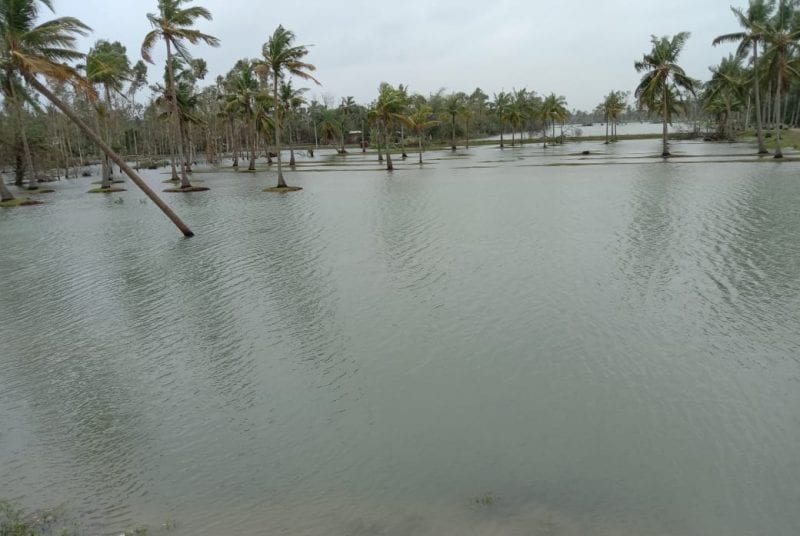
Rebuilding of villages, embankments in Sunderbans begins post Amphan
Black toppings on roads were neatly peeled off their graveled base as though they were nothing more than tarpaulin covers laid loosely over pitches. Mud embankments caved in as if they were landslide-prone hills of soft clay and fragile houses toppled like packs of cards.

Black toppings on roads were neatly peeled off their graveled base as though they were nothing more than tarpaulin covers laid loosely over pitches. Mud embankments caved in as if they were landslide-prone hills of soft clay and fragile houses toppled like packs of cards.
These horrific portraits of devastation seen in the aftermath of Amphan across villages at Gosaba block, one of the deltaic islands in Sunderban region, point at a deeper rot than the nature’s wrath.
On Saturday (May 23), two days after the destruction, villagers were busy repairing the pretentious mud wall they call embankments to stop the ingress of saltwater into their agricultural fields and ponds.
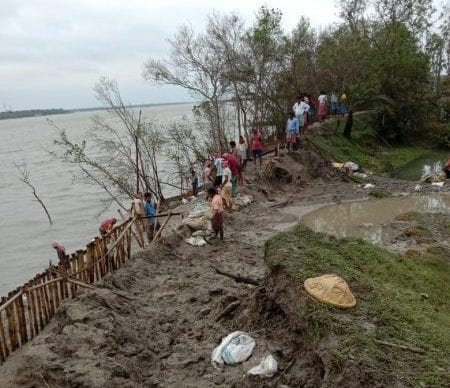
According to preliminary reports of the state’s irrigation department, about 80 kilometres of the 3,500 km-long mud embankments built around 250 years ago, have been breached, while another 8 km was completely washed away.
The patch work started even before Amphan made landfall on Wednesday (May 20) afternoon. Videos and pictures furnished to The Federal by concerned villagers hours before the cyclone struck the delta, showed residents trying to pile up mud bags in a desperate attempt to reinforce the embankments to prevent a repeat of May 25, 2009.
On that ill-fated day 11 years ago, another cyclonic storm Aila had breached about a fourth of the British-era mud embankments, resulting in seawater inundating land and ponds.
The ingression of saltwater had rendered swathes farmland unsuitable for agriculture for the next several years.
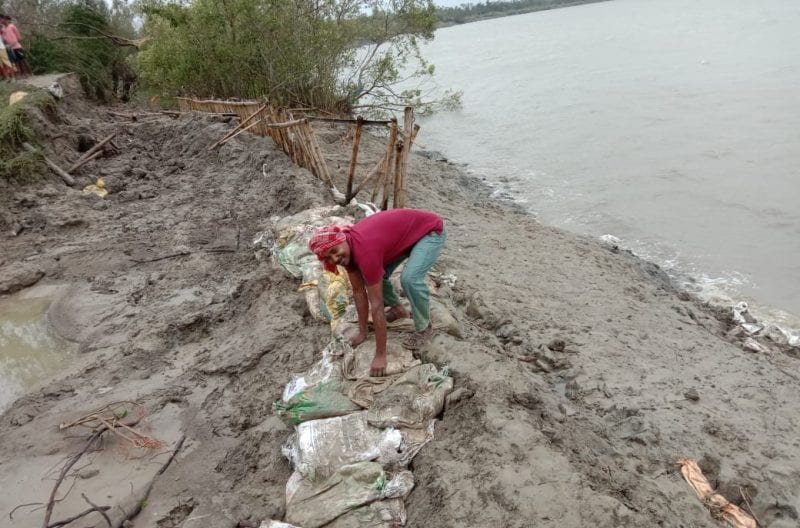
Aila had killed 300 people and razed about 4 lakh houses. The exact extent of damage caused by Amphan is still being ascertained. “The damage is extensive,” said Gosaba MLA Jayanta Naskar.
The only good news so far is that there is no news of any death toll of the delta’s famed Royal Bengal tigers, though many trees in the tiger territory have been uprooted. Of the 102 islands on the Indian side of the delta, 54 are inhabited by 4.5 million people while the rest fall in tiger territory.
To protect the delta, a UNESCO World heritage site, an ambitious ₹5,032-crore Sundarbans Embankment Reconstruction Project was taken up.
As per the project report, the mud embankments were to be replaced by a five-meters-high and 30 to 45 m wide (at the base) structure of concrete brick blocks and river silts with the riverside slope covered by polypropylene sheets.
Apart from the promise of constructing much hardier embankments, the project was also supposed to generate local employment to stem distress migration triggered by the farmland destruction.
According to the government’s records, till now, not even 15 percent works of the project which was supposed to have been completed by 2019, have been done.
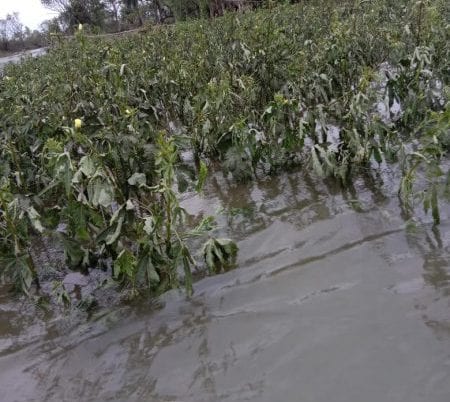
With the project bogged in government’s apathy, the villagers themselves are working on a war footing to repair the mud walls to prevent further seeping of salt water into their farmland and ponds during high tide.
Already, acres of farmland and several ponds in Rangabelia, Kumirmari, and Amtali villages of the block have been inundated with sea water.
The irrigation department officials said over 110 km of embankments built under the project and the strengthening works the department did, prevented an Aila-like destruction this time.
The villagers, however, refuse to subscribe to such tall claims.
“The evacuation process this time was swift with almost all vulnerable residents being shifted to safer relief centres. But the Sunderbans escaped a much larger destruction only because of sheer providence,” said Sanjib Mondol of Rangabelia.
He pointed out that had the cyclone lasted one hour more, it would have collided with the high tide that picked up around 8.30 pm. The collision would have been devastating as Amphan recorded the highest wind speed of 185 kilometre per hour whereas the Aila had blown at 120 kmph.
“We were also much more alert this time and tried our best to reinforce the embankments,” he added.
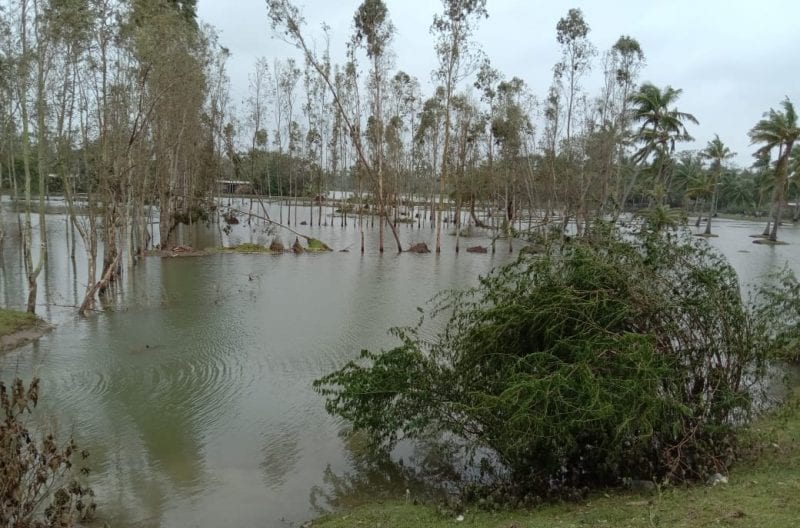
These desperate attempts to bridle nature’s fury met with partial success only. In Rangabelia alone, there were six breaches in two spots, flooding acres of agricultural land and ponds with saline water, destroying vegetables and killing fishes.
“I had cultivated pumpkins and okras on my small plot of land, but the entire produce has been ruined,” said Bhola Mondol.
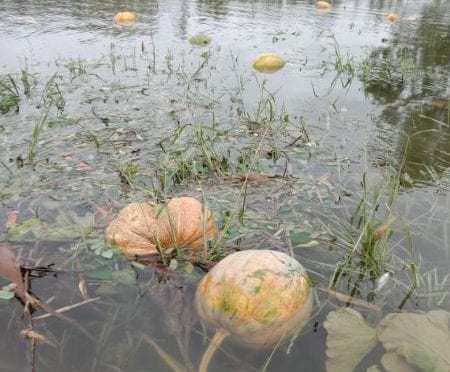
He is now not sure whether his field would be suitable for paddy cultivation that was to begin with the onset of monsoon next month.
His mud house too has given in.
The ruins of mud, bamboo and thatch huts scattered around the island again manifest colossal failure of another government scheme, meant to provide pucca houses to poor rural folks.
Many like Bhola are yet to get the benefit of the rural housing schemes. No wonder, most residents in the island are not interested to talk about government schemes. Ultimately, they know they have to fend for themselves.
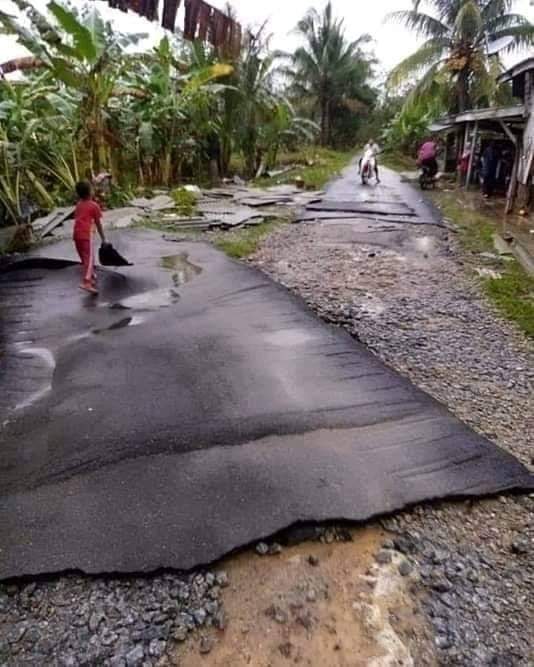
Moreover, the quality of government works was evident from the blocks of bitumen that slid off the village pathways.
Now that the storm has blown over and the restoration work has started, the concern is that corruption and the misuse of government funds as usual would further weigh down the cyclone victims.
It was this concern that was resonated in Chief Minister Mamata Banerjee’s repeated warnings during an administrative meeting to chart relief and rehabilitation plans held at Kakdwip, Sunderbans on Saturday.
“I will not tolerate misuse of even a single rupee. I will not spare anyone involved in corruption,” she warned sternly.

